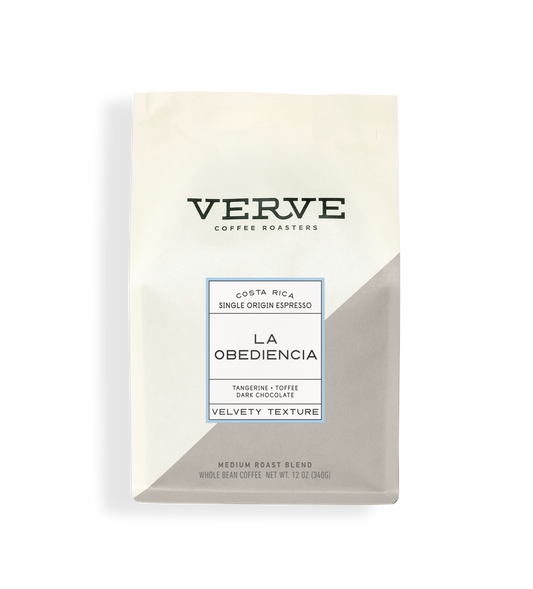A Starter’s Guide to Understanding SOE Single Origin Espresso
A Starter’s Guide to Understanding SOE Single Origin Espresso
Blog Article
Checking Out the Rich Flavors of Coffee Beans: a Deep Study Coffee and Blended Coffee Beans
When you check out the rich tastes of coffee beans, you reveal an intricate world where each variety brings its very own personality to your cup. Understanding the beginnings, refining methods, and toasting methods can transform your coffee experience. As you browse with the art of espresso and the creative thinking behind mixed coffees, you'll begin to value the subtleties that make each sip unique. What you'll uncover next might transform the method you appreciate your morning brew.
The Origins of Coffee Beans: Checking Out Terroir and Taste Profiles
When you take a sip of coffee, you're not just delighting in a beverage; you're experiencing a rich tapestry of tastes formed by the beans' origins. Each area produces unique flavor accounts influenced by altitude, soil, and climate. For example, beans from Ethiopia commonly burst with brilliant, fruity notes, while those from Colombia tend to use a balanced, nutty sweet taste.
As you explore different beginnings, you'll see how terroir-- the ecological variables affecting a crop-- plays an essential role - Single Origin Espresso. The exact same coffee range can taste significantly different depending upon where it's expanded
When you take into consideration these factors, you start to appreciate the complexity behind your cup. Each sip informs a tale of the land and the farmers that supported the beans. So, following time you delight, think of the journey your coffee took before it reached your hands, and enjoy those complex tastes that mirror its beginning.
Recognizing Coffee: The Art and Scientific Research Behind the Brew
When you consider coffee, it's not simply regarding the strong flavor; it's additionally concerning the methods that bring it to life. Comprehending how various prep work approaches effect taste can change your developing experience. Let's explore the intricacies of coffee preparation and uncover the unique taste profiles that make each cup unique.
Espresso Preparation Methods
Espresso prep work is both a science and an art, incorporating exact strategies with a deep understanding of coffee. To begin, you'll intend to pick top notch, freshly roasted beans and grind them finely for excellent extraction (Single Origin Espresso). The work dimension is vital; also coarse, and your coffee will be weak, too great, and it'll be bitter
The outcome should be a rich, creamy espresso with a beautiful layer of crema on top. With method, you'll understand these techniques.
Flavor Accounts Explained
The world of coffee provides a rich tapestry of taste accounts that can raise your coffee experience. When you take that very first sip, you'll see a balance of anger, level of acidity, and sweetness. Each coffee bean lugs one-of-a-kind notes, from fruity and floral to nutty and chocolaty. Light roasts frequently display intense level of acidity and vibrant tastes, while dark roasts existing much deeper, bolder tones.
A well-crafted blend could balance the bright notes of an Ethiopian bean with the rich, chocolatey touches of a Brazilian bean. Accept the journey of uncovering espresso's varied tastes, and you'll transform your coffee routine into an exciting journey.
Handling Methods: Just How They Influence Taste and Scent
While it might appear that the origin of coffee beans is one of the most considerable consider establishing their flavor and scent, the processing approaches utilized post-harvest play an equally essential function. You'll find that these techniques can considerably alter the final preference profile of your mug.
For instance, the washed procedure eliminates the fruit from the beans prior to fermentation, typically leading to a cleaner, brighter taste. On the other hand, the natural process leaves the fruit intact throughout drying, leading to a sweeter, fruitier profile.
Other techniques, like honey handling, strike a balance, permitting some fruit mucilage to remain, supplying an unique complexity.
Each handling technique engages with the beans' inherent attributes, boosting or muting certain tastes and aromas. When you sip that espresso or mixed coffee, bear in mind that the journey from cherry to cup is influenced not just by beginning yet additionally by how those beans were processed.
Toasting Strategies: Opening the Complete Potential of Coffee Beans
Roasting techniques are necessary for disclosing the complete possibility of coffee beans, as they change raw, green beans right into the fragrant, delicious coffee you take pleasure in. The option of toasting approach-- light, medium, or dark-- drastically affects taste accounts. Light roasts protect the beans' all-natural level of acidity and fruity notes, while tool roasts equilibrium sweet taste and splendor. Dark roasts, on the various other hand, highlight vibrant, great smoky tastes.
A slower roast at lower temperature levels enables for complex tastes to create, while a quicker roast can increase bitterness. By mastering these methods, you'll reveal a globe of flavor, boosting your coffee experience to new elevations.
The Magic of Blended Coffee: Producing Unique Taste Experiences
Creating an unique flavor experience with blended coffee can transform your early morning routine into an expedition of taste. By incorporating different beans from numerous regions, you can expose a harmony of flavors that boost your mug to brand-new heights. Each mix deals an unique profile, stabilizing body, sweet taste, and acidity to develop something really unique.
When you pick a blend, you're not simply selecting a coffee; you're selecting a trip throughout varied landscapes and cultures. Trying out various combinations enables you to uncover your individual favorites, whether you take pleasure in fruity notes or abundant, chocolatey undertones.

Sampling Notes: Recognizing the Nuances in Your Cup
As you sip your coffee, you may see a range of tastes dancing on your taste buds, each disclosing the intricacies of the beans. You may taste the brilliant acidity similar to citrus or the deep, abundant notes similar to dark delicious chocolate. The sweet taste can stimulate honey or sugar, balancing the overall profile wonderfully.
Take notice of the body of the coffee-- SOE does it feel airy and light, or is it full and velvety? The surface, as well, offers hints; a lingering aftertaste may hint at nuttiness or floral touches.

Do not fail to remember to explore the unique features of various origins, as each region presents unique flavors - Single Origin Espresso. For example, Ethiopian coffees often existing fruity notes, while Colombian beans may showcase an extra spherical sweetness. By acknowledging these subtleties, you'll strengthen your gratitude for each and every cup, boosting your coffee experience to new heights

Developing Methods: Maximizing Taste Extraction for Every Bean
When you check out the various developing methods, you'll uncover that each method can significantly influence the flavor account of your coffee. From French press to pour-over, each method removes different substances, enhancing or silencing specific notes. Using a French press enables oils to continue to be in the brew, developing a richer taste, while pour-over highlights quality and brightness.
Temperature and grind dimension also play necessary roles. A coarser grind functions best for cold brews, while a great work is perfect for coffee. Trying out water temperature-- between 195 ° F and 205 ° F-- can disclose hidden flavors, as well.
Do not forget soaking time; a fast extraction can result in sour notes, while over-extraction might generate anger. By adjusting these variables, you can maximize flavor extraction and genuinely elevate your coffee experience. Delight in the journey of finding what approach ideal suits your palate!
Often Asked Concerns
What Is the Suitable Water Temperature Level for Developing Coffee?
The excellent water temperature level for brewing coffee's in between 195 ° F and 205 ° F. If you use water that's as well warm, you'll over-extract flavors; too cold, and you won't draw out enough. Goal for that wonderful place for the very best mixture!
Just How Does Work Dimension Impact Coffee Taste?
Grind size significantly impacts coffee flavor. Finer grinds essence a lot more oils and tastes, leading to a bolder taste, while coarser grinds yield a lighter taste. Changing grind size helps you achieve your wanted coffee account.
Exist Wellness Perks Linked With Alcohol Consumption Coffee?

What Is the Difference Between Arabica and Robusta Beans?
Arabica beans are smoother and sweeter, often including fruity flavors, while robusta beans are stronger with a bitter preference and higher caffeine web content. You'll observe these differences in aroma and brewing experience.
How Can I Store Coffee Beans for Freshness?
To store coffee beans for quality, keep them in an impermeable container, far from light, wetness, and heat. If you just grind what you need right prior to brewing., you'll keep their flavor much longer.
Exploring the Abundant Flavors of Coffee Beans: a Deep Dive Into Coffee and Blended Coffee Beans.
When you explore the abundant tastes of coffee beans, you discover an intricate world where each selection brings its own personality to your mug.When you take a sip of coffee, you're not just enjoying a beverage; you're experiencing an abundant tapestry of flavors formed by the beans' beginnings.Roasting techniques are crucial for exposing the complete potential of coffee beans, as they change raw, environment-friendly beans into the fragrant, flavorful coffee you take pleasure in.As you drink your coffee, you might notice a spectrum of flavors dancing on your taste, each revealing the complexities of the beans.
Report this page